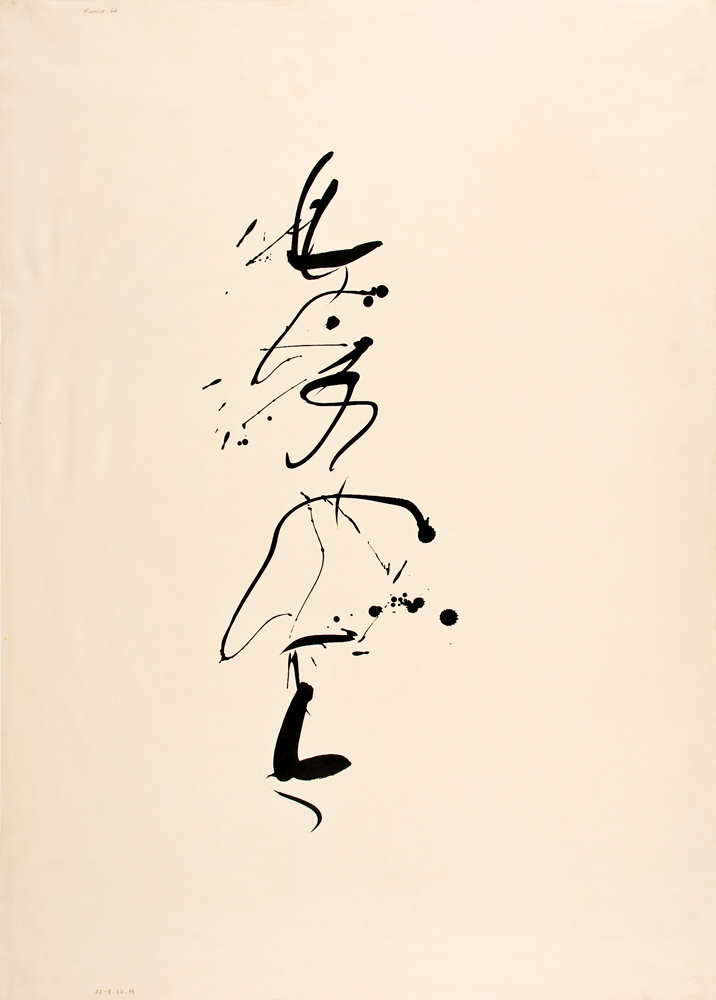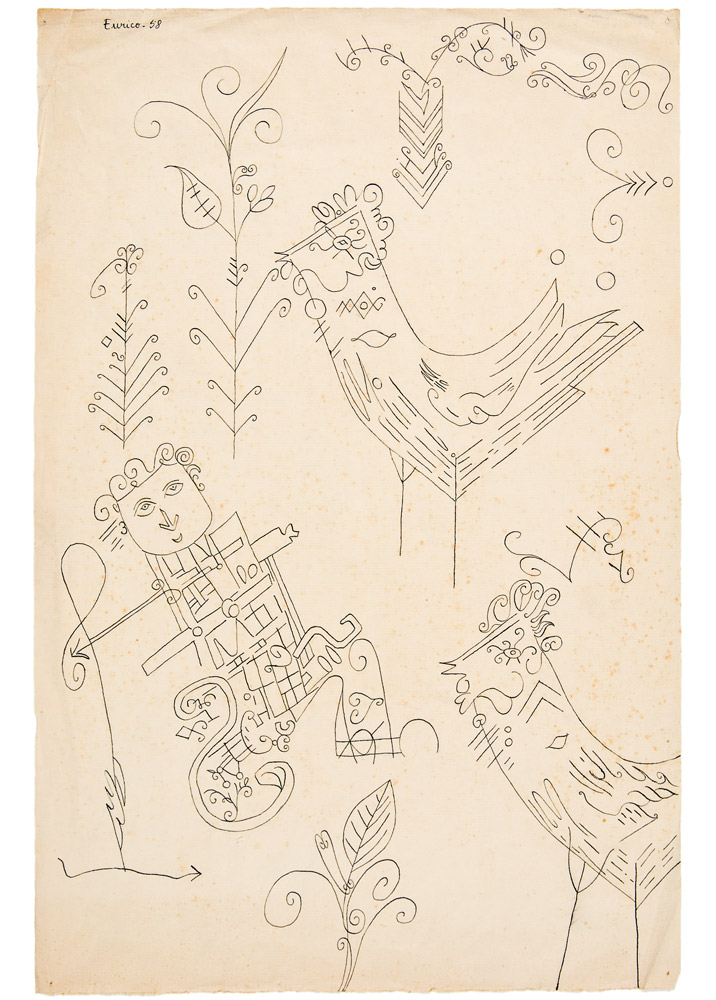Eurico Gonçalves (1932-2022)

The brother of the critic and art historian Rui Mário Gonçalves, who died in 2014, Eurico received a Calouste Gulbenkian Foundation grant in Paris, between 1966 and 1967. As well as contributing as an art critic to various Portuguese newspapers and magazines, Eurico published books linked to his vast knowledge in the area of visual expression in children.
Eurico Gonçalves followed surrealism at the start of his career, and in 1950-51, wrote and illustrated dream narratives, automatic texts and poems. His work evolved from this figurative phase into a gestural and non-geometric abstraction.
The CAM Collection possesses eight significant works by the artist, encompassing various phases in his visual production.


Between 1964 and 1966, Eurico’s work revealed an interest in Oriental art, expressed in the ‘Caligrafias’ (Calligraphies) and ‘Escritas’ (Writings) series, as exemplified in the work in the CAM entitled 20 – 8 – 64 – M. The major series of works ‘Estou Vivo e Escrevo Sol’ (I Am Alive and I Write the Sun), which he began in 1970, was based on the poem of the same name by António Ramos Rosa. The CAM collection has one work from this series, in which the red colour dominates the pictorial area, as does the presence of the circle – an image of harmony that contrasts with the swift scribbling on the lower part. In the ‘Desdobragens’ (Unfoldings) series from the 1980s, we find a playful gesture and the presence of primary colours, as is the case with Desdobragem, which is part of the Collection.
In Eurico’s work, the coloured surfaces and the free and sweeping brushstrokes are enhanced by the essence of magical and poetic thought combined with Zen wisdom.